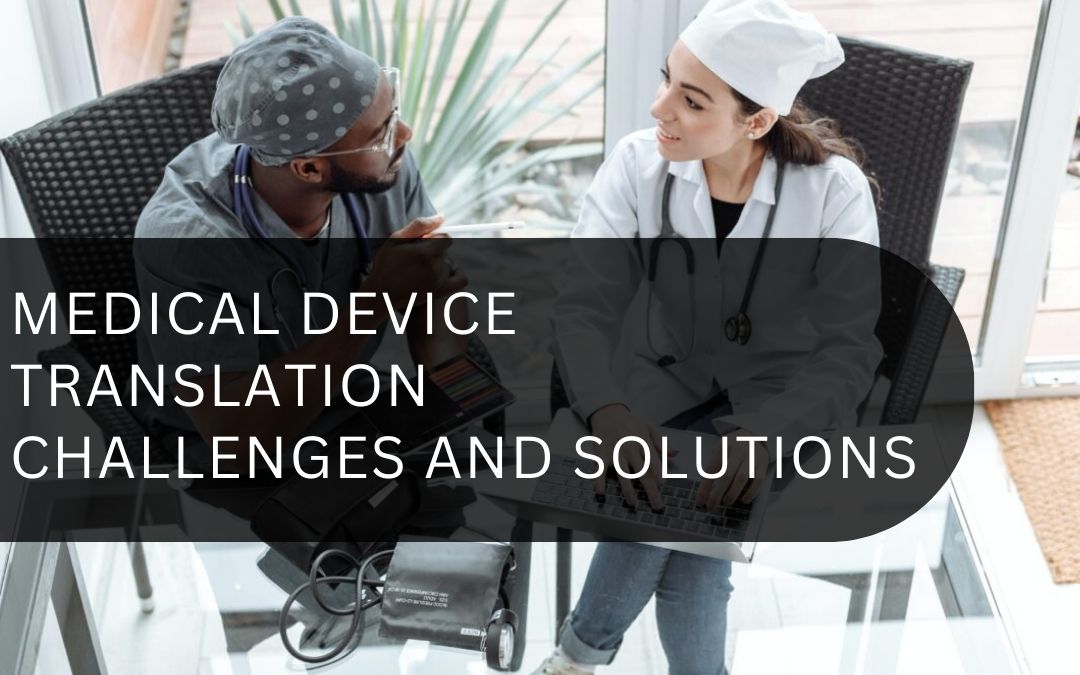The translation of medical device documentation is a crucial aspect of ensuring patient safety and successful market penetration in the global healthcare industry. However, this task is far from straightforward, with several challenges that demand careful consideration. In this blog post, we will explore the first five challenges and their corresponding solutions in the realm of medical device translation.
1. Introduction to Medical Device Translation
Medical device translation involves rendering critical documentation, such as user manuals, labels, and software interfaces, into multiple languages to facilitate safe and effective use in diverse markets. It plays a pivotal role in ensuring compliance with regulatory standards and accommodating global patients and healthcare professionals.
2. Regulatory Landscape
The regulatory landscape for medical devices is complex and varies from region to region. Agencies like the FDA in the United States and the European Medicines Agency (EMA) in the European Union have stringent requirements for translated materials. These regulations mandate not only accurate translations but also adherence to specific terminology and formatting guidelines.
Solution: Employing certified medical translators who are well-versed in the regulatory requirements of the target market is essential. They can navigate the intricate web of regulations, ensuring that translations meet all compliance standards.
3. Complexity of Medical Terminology
Medical terminology is highly specialized and, at times, incomprehensible to those without a medical background. Translating intricate terms while preserving their precision and context poses a significant challenge.
Solution: Utilizing terminology management tools and collaborating closely with subject matter experts can help ensure the accurate translation of complex medical terms. Creating a glossary of standardized terms specific to the device and its field is also beneficial.
4. Accuracy and Precision
In the medical field, there is no room for error. A minor translation mistake can lead to catastrophic consequences. Ensuring that translations are not only accurate but also precise is paramount.
Solution: Rigorous quality control processes, including proofreading by multiple linguists and validation by medical professionals, are essential. Validating translations through clinical trials and user testing can further enhance accuracy.
5. Cultural Sensitivity
Cultural sensitivity is critical in medical device translation, as healthcare practices and patient expectations vary across regions. A translation that does not consider cultural norms can be ineffective or even offensive.
Solution: Translators with cultural expertise in the target market should be engaged to ensure that translations resonate with the local audience. Understanding cultural nuances, preferences, and taboos is essential to crafting sensitive and effective medical device content.
6. Multilingual Labeling
Medical device labeling is a critical component of patient safety and regulatory compliance. Accurate translation of labels and packaging information is essential to ensure that users in different regions can understand product usage, warnings, and contraindications.
Solution: Employ a consistent and standardized approach to label translation. Work closely with translators who understand the specific requirements of medical device labeling in the target markets. Ensure that label layouts can accommodate longer or shorter translations while maintaining clarity and legibility.
7. User Manuals and Instructions
User manuals and instructions for medical devices are indispensable for healthcare professionals and patients alike. Translating these materials involves not only linguistic challenges but also the need to maintain usability and safety.
Solution: Collaborate closely with technical writers, subject matter experts, and medical translators to create clear and comprehensible user manuals. Focus on user-centric design, including visual aids, icons, and step-by-step instructions, to enhance usability. Usability testing in the target language can identify any issues with clarity and comprehension.
8. Medical Device Software
Many modern medical devices, including diagnostic equipment and treatment systems, incorporate software interfaces. Translating software interfaces is a unique challenge because it involves not just linguistic adaptation but also ensuring that the translated interface remains user-friendly and functional.
Solution: Engage software localization experts who are experienced in medical device translation. Implement user interface design principles that allow for text expansion or contraction in different languages. Conduct thorough testing to ensure that the software functions correctly and retains its user-friendliness after translation.
9. Quality Control
Quality control in medical device translation is non-negotiable. The consequences of errors or inaccuracies can be severe, including patient harm and legal repercussions. Quality control processes must be rigorous and systematic.
Solution: Implement a robust quality assurance process that includes proofreading, editing, and verification by certified medical translators. Create a feedback loop for reviewers and translators to address questions and ambiguities. Regularly update and refine quality control procedures to adapt to evolving regulatory standards and industry best practices.
10. Collaboration with Medical Experts
Collaboration between language experts and medical professionals is instrumental in achieving accurate and effective medical device translations. Medical experts bring domain knowledge, ensuring that the translated content aligns with medical practice and terminology.
Solution: Involve medical professionals, such as doctors or nurses, in the translation process. Their insights can help validate translations, clarify medical terminology, and address context-specific nuances. This collaboration ensures that the translation not only meets linguistic standards but also retains medical accuracy.
In conclusion, the translation of medical device documentation is a complex and highly specialized endeavor. Addressing challenges related to multilingual labeling, user manuals, software interfaces, quality control, and collaboration with medical experts is essential to produce translations that are not only accurate but also safe and user-friendly. By implementing these solutions, medical device manufacturers can confidently navigate the intricate terrain of medical device translation, ensuring that their products reach and benefit global markets effectively and safely.
[wpforms id=”3801″]

